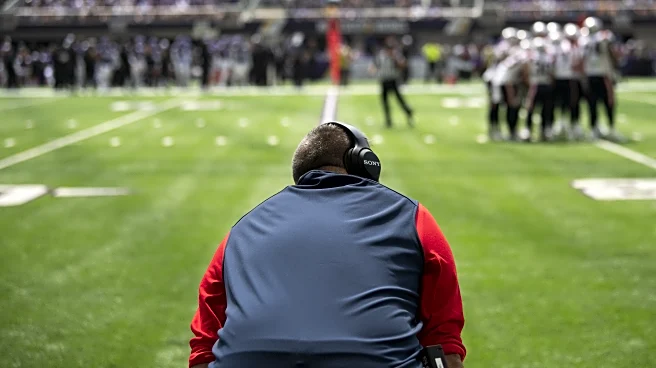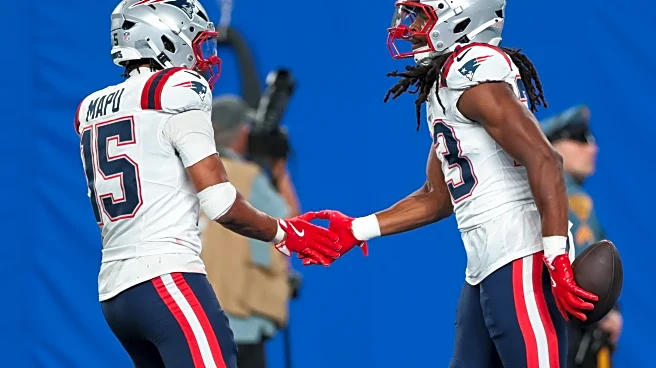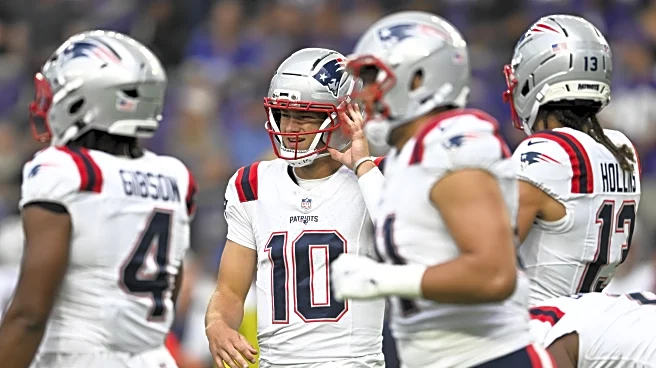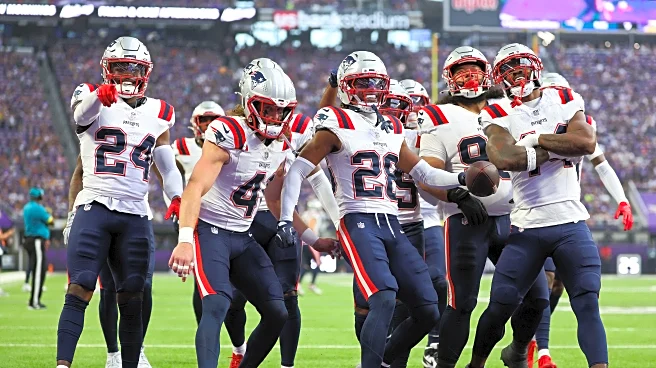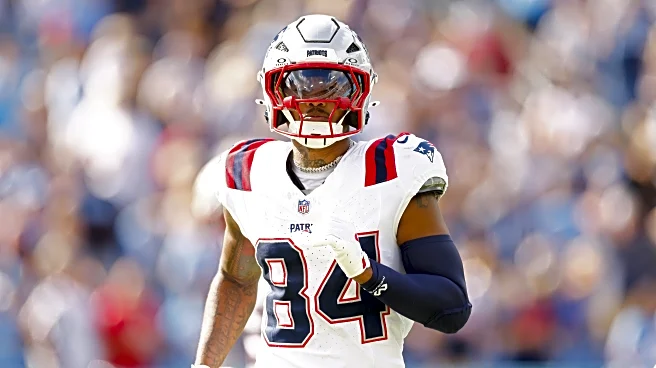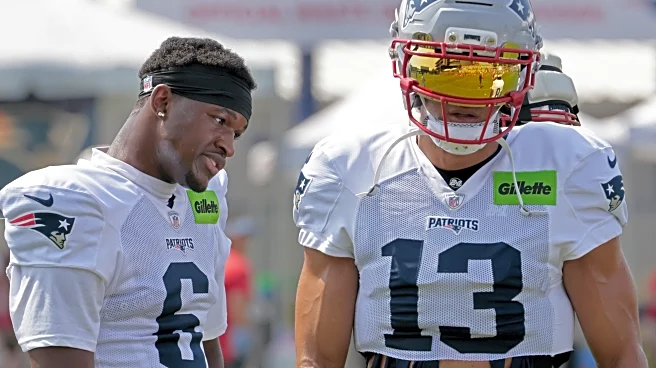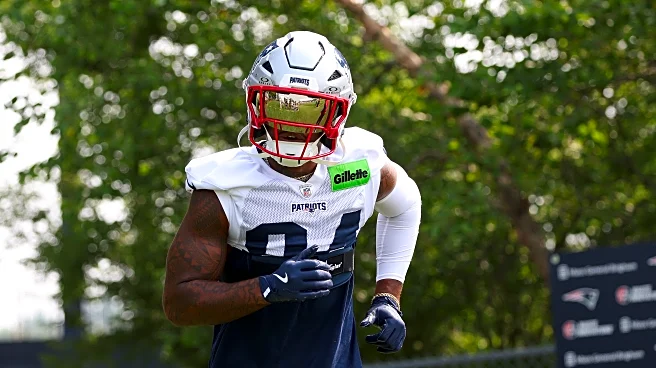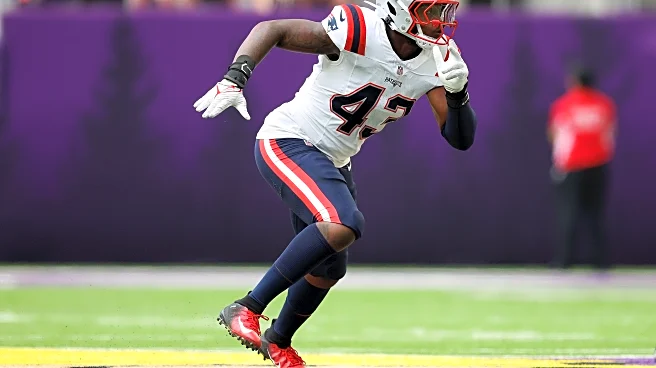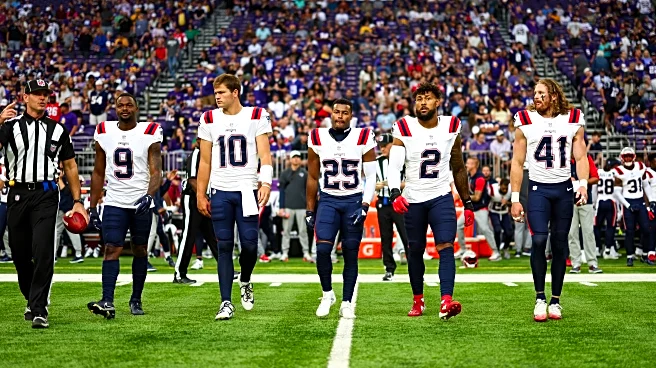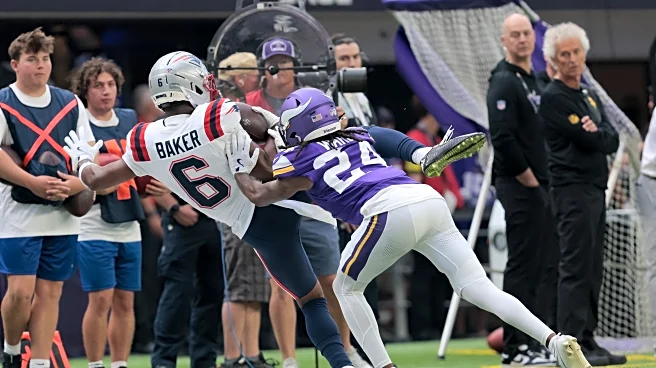
For the New England Patriots and the rest of the NFL, the “worst day of the year” is officially over. By 4 p.m. ET on Tuesday, rosters across the league had been reduced to no more than 53 players — a process that put around 1,000 players out of a job, in some cases permanently.
Having entered the day at 76 active players, the Patriots had to make 23 transactions. There were no real shockers or true headline names involved, but every one of those moves comes with its own fallout both from a team and
more importantly a personal perspective. For as much as the NFL loves the spectacle and dominating the news cycle — although a certain singer had something to say about that on Tuesday — it is, at the end of the day, a job for hundreds of people.
Pro football, however, rolls on. And at the end of the day, New England was left with its initial 53-man roster for the upcoming 2025 season.
Here are six thoughts on it.
1. The biggest question when it comes to the Patriots at this stage in their developmental process is this: will they be good enough? Obviously, that is quite the loaded question and the answer will differ depending on one’s definition of what “good” actually means in the context of an NFL team. Super Bowl-caliber? Playoff contender? Just better than 2024?
That last goal seems like a fair one for a team that is still very much in the early stages of its rebuild. Head coach Mike Vrabel was hired less than eight months ago, while quarterback Drake Maye has only 12 career starts under his belt. They will be the main men to impact the organization’s fortunes moving forward, but it might take some time for them to actually lift the team from the abyss it found itself in for at least the last two years.
Going back to that question above, the Patriots do look like a team equipped to show some actual improvement in the win-loss column this season. Their starter-level talent across the board looks better and that does not even account for Maye’s second-year jump or the (hopefully) improved coaching he is receiving. However, pro football is the ultimate team game not just because of the fragility of its in-play structure — a single player can mess up everything — but also the importance of the non-starters on a roster.
While players 1 to 22 are the headline names in most cases, those from 23 to 53 are of marginally lesser importance to the operation. And this is where the Patriots and their hope for improvement might get tested this season.
A look at the roster as its stands, after all, shows that there are some question marks below the top level. Are the depth cornerbacks equipped to do the job if Christian Gonzalez’s absence extends into the season? What about the backup offensive linemen, who are almost certain to see some level of action? How about the fact that only three running backs are on the roster?
Smaller questions like those will have a massive impact on the big one above. Until the Patriots’ depth is actually tested, though, none of them have clear answers.
2. We already spoke the other day about how the Patriots’ shortcomings in the draft department have left the team understaffed and directly contributed to back-to-back 4-13 seasons. Tuesday’s cuts were another reminder of that because arguably the poster boy of those draft misses — together with 2019 first-round wide receiver N’Keal Harry — was let go: Cole Strange, the 29th overall pick in the 2022 draft.
Strange was a controversial selection from the start. Sure, it did not help that there was a video of the Los Angeles Rams’ brass showing a certain level of amusement, but he was not expected to get drafted on Day 1 to begin with. In fact, the pre-draft consensus had him as a third-round pick.
Taking gambles such as this one would not have been a problem during the heyday of the Patriots’ dynasty in the 2000s and 2010s. Back then, the team’s drafting had not been as spotty as it was in later years during the Bill Belichick era. They also had the greatest quarterback of all time, Tom Brady, on their roster to help mask potential shortcomings. Picking a player like Strange in 2012, for example, might have been a lot different than doing so 10 years later; the roster at that point was simply better equipped for high-upside swings such as this one.
Of course, it goes without saying that the circumstances did also not do Strange any favor upon his arrival in New England. He was a fairly promising prospect early on; he started all 17 games during his rookie campaign and showed some clear signs of development during his sophomore season. However, his second year in the NFL came to an abrupt end when he suffered a major knee injury in December.
The injury put a halt to his growth and forced him to spend the next 12 months on the sidelines. When he returned, the team had a new coaching staff in place that decided to move him from guard to center. He moved back to his former position under the new regime led by Mike Vrabel but never regained the momentum he appeared to build during his injury-shortened 2023 season.
His release on Tuesday was ultimately no surprise. One is left to wonder, though, what could have been had he stayed healthy — or had the team made a different pick in the first place.
3. Fairly or not, most of the blame for high-level draft flameouts like Cole Strange falls on the one who made the decision to draft him. Bill Belichick’s misses overseeing the personnel department late during his tenure as Patriots head coach and quasi-general manager have been well documented, with Strange as a crowning jewel of sorts considering the nature of that particular selection.
The 2022 draft class as a whole was a major whiff for Belichick and the Patriots, and helped set the course for the two sides’ departure less than two years later. However, fast forward another two years and you can see that there are plenty of Belichick fingerprints still on the team to this day.
In total, 20 of the 53 players on the initial roster were acquired under his tenure. Those include franchise cornerstones such as Christian Gonzalez and Christian Barmore, but also some of the valuable depth pieces that play important roles as well.
Special teams ace Brenden Schooler, for example, was signed at the tail-end of that underwhelming 2022 rookie haul as an undrafted free agent. Linebacker Christian Elliss and cornerback Alex Austin, meanwhile, were both added during the 2023 season as a waiver claim and free agency pickup, respectively. None of them are necessarily stars at the same level as Gonzalez — although Schooler is one of the NFL’s best special teamers — but they all have now made the 53-man roster under both of Belichick’s successors.
This goes to show three things: roster construction is quite nuanced; the Patriots’ 2025 roster is, in a way, a collaborative effort; and that the unheralded pickups of today might just end up as the contributors of tomorrow.
4. Unheralded pickups are also the theme of the day for Wednesday. The Patriots, after all, are in position to add some talent on the waiver wire; holding the fourth spot on the priority list, they very well could overhaul the backend of their roster less than 24 hours after establishing it.
Of course, bringing players in via waivers also always means that corresponding moves are in order. For the Patriots, there are several candidates to earn that dubious distinction: Javon Baker and Kendrick Bourne as the seventh and eighth wide receivers; Jack Westover as a third-string tight end/fullback hybrid; Dell Pettus and maybe even the oft-discussed Kyle Dugger as depth pieces at safety. All of them might end up on the outside looking in after all once the waiver process is over.
The 53-man roster, after all, is never final. And that puts the players near the bottom of the pecking order in a dangerous position even after surviving cutdown day.
5. Despite previously talking about some potential roster shortfalls, fact is that New England also has plenty of intriguing talent on its roster. The likes of Drake Maye and Christian Gonzalez lead the charge, but they are not the only ones worth mentioning.
At running back, the mix of Rhamondre Stevenson, Antonio Gibson and rookie TreVeyon Henderson has serious game-changing potential, for example, and top-to-bottom could be one of the most talented rooms in the entire NFL. While there are questions at the other skill positions, that trio in combination with an offensive line that should perform better in the run game in 2025 could allow the Patriots to — going back to an earlier theme — mask some of their other issues.
New England also has a talented group of starting interior defensive linemen in Christian Barmore and Milton Williams, a top-tier cornerback tandem with Carlton Davis on the other side of Gonzalez, and promising rotations both on the defensive edge and at safety.
Again, depth is a question mark until further notice. However, that does not mean that the Patriots do not have some significant talent at the top of their depth chart. And if that talent manages to stay healthy — a big if given the nature of the game — the team might be on a faster track to improvement than originally anticipated. Relative to 2024, and to a degree 2023, that is in itself a major step forward for the organization.
6. The Patriots’ new coaching staff asked a handful of players this offseason to change positions or expand their repertoire, and it seems that that process has been a successful one for all involved.
The most prominent example might be 2024 fourth-round wide receiver Javon Baker. Coming off a disappointing rookie season that saw little to no people get out of their wheelchairs, Baker found himself under quite a bit of pressure to carve out a role on a rebuilt receiver depth chart; adding three quasi-locks to the roster in Stefon Diggs, Mack Hollins and Kyle Williams made his future quite murky.
To Baker’s credit, though, he was able to expand his role. After playing only 28 special teams snaps total during his rookie season, he played 20 in three exhibition games this year. Most importantly, he performed on four kicking game units; his contributions played a big role in him making the roster, and might allow him to stick around even after the waiver process is over — all despite his outlook at receiver remaining somewhat unclear.
The other players to fall into that conversation are Caedan Wallace and Marte Mapu. The former moved from tackle to guard, with the latter going from safety to linebacker this offseason. They did not have to entirely overhaul who they are as players in order to fit their new roles, but any and all change of that nature comes with its own set of challenges.
Both Wallace and Mapu seem to have successfully maneuvered through them this spring and summer. As with Baker, that is a testament to their adaptability and also speaks for the Patriots coaching staff: they identified potential in all three at other spots, and they answered the call.
When it comes to building an identity, things like that matter.
